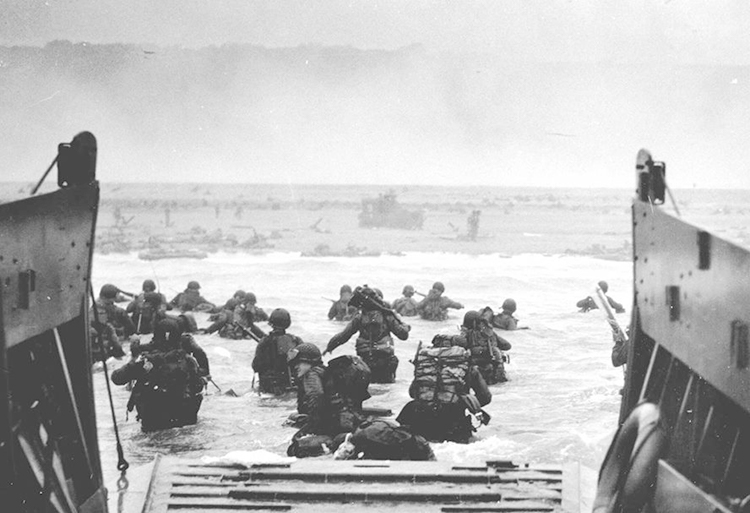In World War II Operation Overlord, the long-delayed, cross-channel invasion of northern France, happened in May 1944 by the Western Allies. The operation’s supreme commander, General Dwight D. Eisenhower, commanded the combined efforts of 12 different countries.
In World War II, allies chose Normandy after a long debate. Because of this, the Allies would be able to use surprise to their advantage. As the English Channel narrows near Pas de Calais, the German high command prepares for an offensive there. Hitler had placed the majority of his panzer divisions in the Pas de Calais.
The Allied invasion strategy relied heavily on surprise. The Germans sent their 55 divisions in France into the sea when they found out where the Allies would arrive. With a 10-to-1 manpower disadvantage, the invaders would have taken the initiative.
The difficulties of landing a plane were overwhelming. It took the enemy months to build the 2,400-mile-long Atlantic Wall. This wall was to prevent ships from passing through England’s notoriously stormy and unpredictable English Channel.

There were 6.5 million mines in this fortification, as well as tens of thousands of concrete bunkers and pillboxes housing fast-firing artillery and thousands of tank trenches. And the German army would be encamped on the bluffs overlooking the American landing beaches, ready to spring into action.
Overlord slated to begin on or around May 1, 1944, during the Tehran Conference in August 1943. They were constantly preparing for the assault in the meanwhile. More than half a million soldiers and hundreds of thousands of vehicles rushed into the country. In the words of one American sergeant, “we were getting set for one of the greatest experiences of our life.”
“We couldn’t wait for it to be over,” they said. Meanwhile, the American and British air forces in England conducted a tremendous bombing campaign. This targeted railroad bridges and roadways in northern France. It prevented the Germans from bringing in reserves to stop the invasion.
D-Day for the invasion was declared by Allied authorities on June 5, 1944. The assault was scheduled for June 4, but bad weather in the English Channel caused Eisenhower to put it off for another day. There had been some anxiety among troops and sailors, but Eisenhower decided to proceed when meteorologists predicted a small window of calmer weather across the canal on June 6. Decisions like these were the most daring of World War II.

Allies started deploying airborne soldiers into hostile territory at midnight on June 6. Allies demolished bridges and railroads to prevent the enemy from sending reinforcements to the assault beaches. Soon after, the greatest amphibious invasion force ever organized started advancing through the swelled seas in direction of the beaches.
Allies launched Flat-bottomed Higgins boats from troop ships ten miles off the French coast to convey most of the Americans. The green-faced guys had to use their helmets to bail the nasty stew from the bottom of the boats as water rushed in over the gunwales. The male soldiers perspired despite the freezing temperatures.
The planners divided beach into five distinct parts. The British and the Canadians controlled Juno, Gold, and Sword. Omaha and Utah beaches were occupied by the United States.
Intense combat erupted on Omaha Beach, where the Axis forces were present on high bluffs overlooking the beach’s vast, flat expanse. For hours, merciless machine-gun fire converted the beach into an enormous killing field as troops sprang from their landing craft. Lieutenant Colonel Bill Friedman warned: “If you (stayed) there, you were going to perish.

As the Germans had built their fortifications on the cliffs, “we only had to.. attempt to reach to the bottom of the cliffs.” Over 4,700 Americans died, injured, or missing out of the estimated 35,000 that landed on Omaha Beach that day, a casualty rate of more than 13 percent, before noon.
More than 175,000 Allied troops arrived before midnight, and over a million more were to arrive in the summer. During World War II, the invasion of Normandy was one of the most pivotal events of the era. An immense army entered Nazi-occupied Europe, that never dislodged.
Germany felt threat of a tremendous Soviet invasion from the east that would reach the gates of Berlin by the following April. In order to grasp D-significance, Day imagine what might have occurred if it had not been successful. For at least a year, another landing was out of the question.
With more time to build up the Atlantic Wall, annoy England with V-1 and V-2 flying bombs, continue to develop jet aircraft and other “wonder weapons,” as well as finish off his death campaign against racial or sexual undesirables, Hitler would have been able to carry out these and other tasks.
Muhammad Saad is a Freelance Article, Blog, and Copywriter. He provides his services on Fiverr under the username @saadiqbal599.







